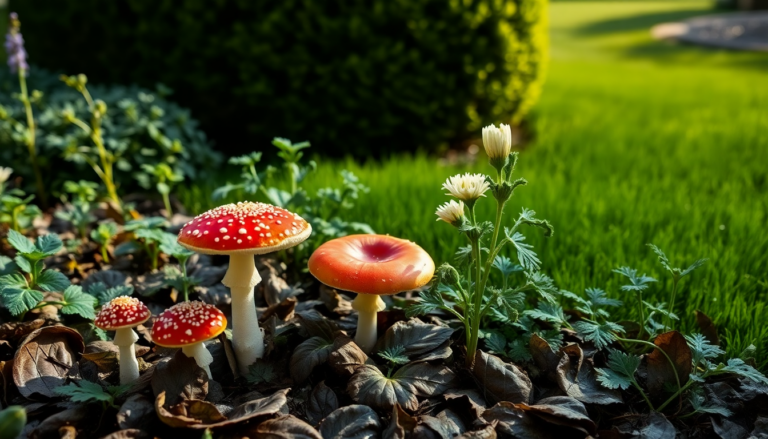Argomenti trattati
Common hazards in your yard
Your yard is a space of beauty and relaxation, but it can also harbor unexpected dangers. From common weeds to invasive species, many plants and fungi can pose risks to your health and safety. While some dangers are widely recognized, like poison ivy, others may surprise you. Understanding what to look for can help you maintain a safe and enjoyable outdoor space.
The threat of poisonous mushrooms
After days of rain, mushrooms often sprout in yards, and while most are harmless, a few varieties can be extremely toxic. Only about 3% of mushrooms are poisonous, but it’s crucial to identify them correctly. Consuming a toxic mushroom can lead to serious health issues, ranging from gastrointestinal distress to severe liver damage.
One particularly dangerous type is the death cap mushroom (Amanita phalloides). Known for its lethal properties, this mushroom can be found near oak, elm, and birch trees. Steve Schumacher, owner of Boston Landscape Co., points out that these mushrooms are responsible for 90% of mushroom poisoning fatalities. Identifying them is key; they usually have a white or yellow cap with a greenish tint and white gills that do not attach to the stem.
If you spot mushrooms in your yard, it’s best to wear gardening gloves and remove them carefully. Grasp them at the base and pull them out entirely. Keeping your soil well-drained and regularly clearing away decaying organic matter can help prevent these fungi from returning.
Understanding snow mold and its effects
As winter fades and snow melts, many homeowners might notice a furry growth on their lawns known as snow mold. This cold-weather fungus affects cool-season grasses like Kentucky Bluegrass and Fescues, emerging after extended periods of snow cover. Not only can snow mold cause aesthetic damage to your lawn, but it can also trigger allergies and worsen respiratory issues for sensitive individuals.
Dr. Roger May, an agronomist at TruGreen, suggests that if you detect snow mold, it’s crucial to wear an N95 mask and rake the affected areas to improve air circulation. Additionally, cutting your grass short in late fall can help prevent excessive matting, which encourages snow mold growth. Avoiding high-nitrogen fertilizers in the fall can also promote better soil drainage, reducing the risk of this troublesome fungus.
Another concern for homeowners is the presence of rodents such as gophers and moles. These creatures dig tunnels underground, which can disrupt irrigation systems and lead to uneven, spongy lawns. Such conditions not only affect the appearance of your yard but can also create tripping hazards.
Schumacher notes that these pests tend to be more active during spring and summer, especially in areas adjacent to vacant lots. To deter rodents humanely, consider using repellents that contain castor oil or installing physical barriers like raised flower beds.
The slippery issue of nostoc
Nostoc, a blue-green cyanobacterium, is a fascinating organism that has existed for billions of years. Often mistaken for slimy seaweed, nostoc appears in damp areas of your yard and can create slippery surfaces. While it doesn’t harm plants or animals, it can lead to slip-and-fall accidents.
If you find nostoc on your pathways or lawn, a flat-edged shovel can be used to skim it away. If it’s prevalent, aerating your soil can help alleviate compaction and improve drainage, reducing the conditions that allow nostoc to thrive.
Slime mold: A harmless yet unsightly presence
Seeing yellow or orange blobs in your yard can be alarming, but slime mold is generally harmless. This organism often appears following rain in humid regions and while it may look off-putting, it doesn’t pose a health risk to humans or pets. According to Taylor Green, a professional landscaper, slime mold can suffocate grass or plants if left unchecked, but it typically dries out on its own.
If you wish to remove slime mold, you can use a pressure hose or rake it away. Improving your lawn’s aeration can also help reduce moisture buildup, which is conducive to slime mold growth.
Maintaining a safe outdoor space
Keeping your yard safe from potentially harmful plants and organisms requires vigilance and regular maintenance. By identifying and managing these hazards, you can create a healthier environment for yourself, your family, and your pets. Remember that while many of these organisms are part of a natural ecosystem, understanding their implications is key to maintaining a secure and enjoyable outdoor space.
Stay informed and proactive in your yard care to ensure it remains a sanctuary rather than a source of worry.

